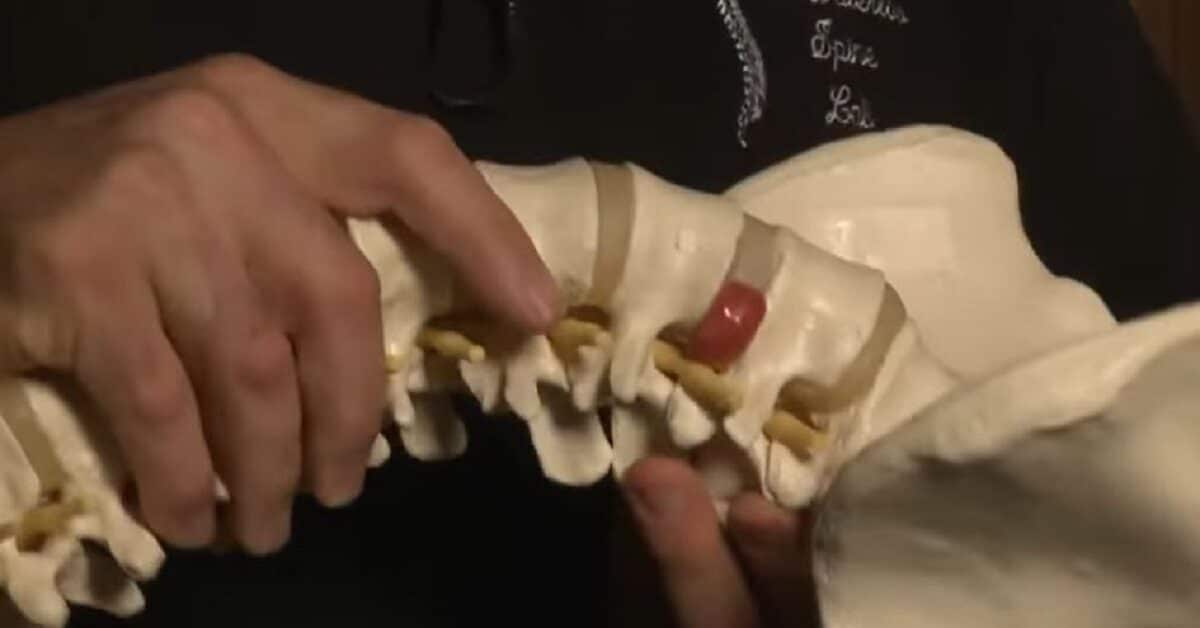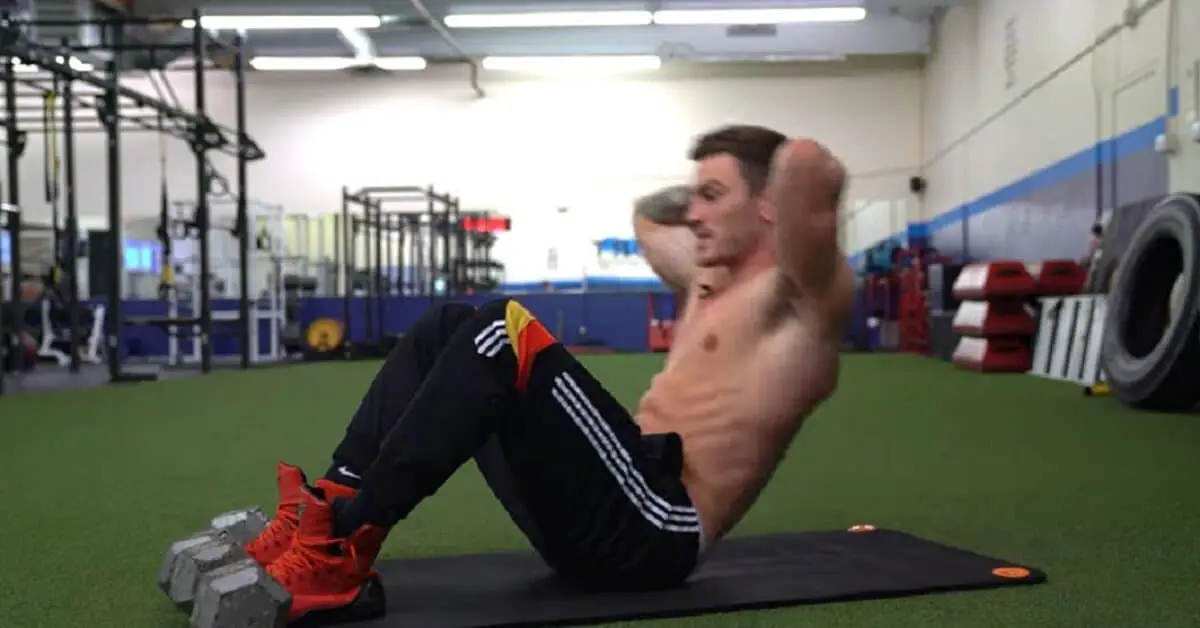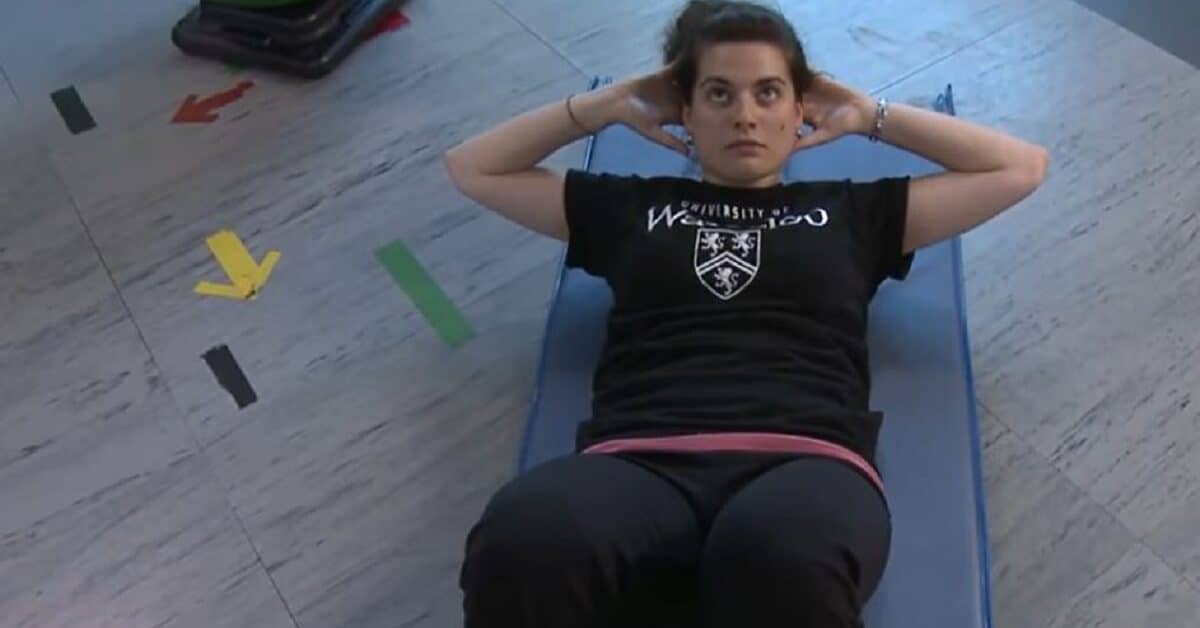
Sit-ups are bodyweight exercises that strengthen abdominal and core muscles while burning calories.
How many calories you burn while doing sit-ups depends on multiple factors, such as age, sex (gender), height, weight, exercise intensity, duration, and lean body mass.
We present a Calories Burned Calculator (click the link to view our calculator) that lets you estimate your rate of energy expenditure while performing sit-ups. The calculator estimates your energy consumption, taking into account your age, sex, height, body weight, lean mass, and exercise duration at two intensity levels: moderate and vigorous.
Our calculator also lets you estimate the calories burned by performing any number of sit-up reps at moderate or vigorous intensity levels. Exercise intensity is a function of effort. The higher the exercise intensity, the higher the number of calories burned per unit of time.
You also get an estimate of your Basal Metabolic Rate (BMR) or Resting Metabolic Rate (RMR).
For the benefit of readers interested in learning how to do the calculations themselves, this article includes sections that provide step-by-step instructions on how to calculate calories burned doing sit-ups.
You will also learn how to calculate your Basal Metabolic Rate (BMR) and potential weight loss due to performing sit-ups.
Calculating calories burned is easy. It does not require advanced math skills.
Contents:
A note on energy expenditure estimates based on formulas
Calories Burned Calculator: Sit-ups
Sit-ups strengthen your core and burn calories
How to calculate calories burned: Metabolic Equivalent of Tasks
What is the MET value of sit-ups?
What are Standard METs and how are they calculated?
How to calculate calorie expenditure using standard METs
How many calories do 100 sit-ups burn?
Fat or weight loss due to sit-ups
A note on energy expenditure estimates based on formulas
The factors that determine energy expenditure due to physical activity are complex. Individualized values are difficult to estimate accurately through simple mathematical formulas.
Thus, the calories burned values that online calculators generate only help you gain a rough idea of the energy cost of physical activity.
They may also help you compare the effectiveness of different physical activities for burning calories.
The best way to estimate energy expenditure is through measurement using methods such as:
- Direct and indirect calorimetry
- The doubly labeled water technique (DLW)
- Heart rate monitoring
Calories Burned Calculator: Sit-ups

Depending on the level of exercise intensity (moderate or vigorous), an average, healthy adult woman, standing 65 inches (165 cm) tall and weighing 63kg (139lbs), burns between 3.8 to 8.2 calories per minute performing sit-ups.
An average, healthy adult man, standing 70 inches (177.8 cm) tall and weighing 83kg (183lbs), burns between 5.1 to 11.00 calories per minute performing sit-ups.
You can use use our Calories Burned By Sit-ups Calculator (see below) to obtain individualized estimates of your energy expenditure.
You don’t have to do the math yourself. You only need to enter the required details.
Besides calculating calories burned, our calculator also estimates your
- Basal Metabolic Rate (BMR) or Resting Metabolic Rate (RMR) in kcal/day,
- Resting oxygen consumption (ml/kg/min)
- Corrected MET value
The values are individualized because they are calculated using mathematical formulas that incorporate the information you supplied.
The calculator also accounts for the effects of high lean mass on energy expenditure. It includes a drop-down menu that allows athletes and bodybuilders with high lean mass and high BMI (calculate your BMI here) to select the body fat percentage range in which they fall.
Our calculator adjusts for high lean body mass by using the Katch-McArdle formula to estimate your baseline metabolic rate.
This article also offers step-by-step tutorial instructions for readers who want to learn how to calculate energy expenditure by themselves.
Readers interested in calculating how many calories push-ups burn may use our calories burned by push-ups calculator.
Sit-ups strengthen your core
Sit-up exercises are calisthenics performed to strengthen core muscles.
The videos below show different ways to perform sit-ups properly. Chose the method you find most convenient to avoid back or neck injuries.
You start a sit-up lying flat on your back with your knees bent and feet touching the floor (see the video below). Engage your core muscles to lift your upper body to a sitting position. Repeat the movements as many times as you can.
You can do the exercise with a weight over your toes (see video below). If you find the traditional sit-ups demonstrated in these videos too strenuous, you can do yours on a recliner.
Core muscles refer to those of the torso that help stabilize the trunk during movement.
Your core muscles include those of the belly, hips, pelvis, upper, middle, and lower back.
The main core muscles include:
- Transverse abdominis
- Rectus abdominis
- Internal and external obliques,
- Multifidus
- Erector spinae (iliocostalis, spinalis, longissimus)
- Pelvic floor muscles
The minor or peripheral core muscles are:
- Latissimus dorsi
- Gluteus maximus
- Trapezius
Core muscles contribute to stabilizing the body when executing complex kinetics.
Athletes focus on performing sit-ups because they develop and strengthen the core and thus help improve endurance, flexibility, mobility, stability, and posture. Strong core muscles reduce the risk of sprains and injuries during athletic activity. They also reduce the risk of acute and chronic lower back pain due to poor posture.
Are sit-ups bad for you?

There are many variations of sit-up exercises. Many health enthusiasts do sit-ups because they want to develop six-pack abs.
However, experts have expressed concerns about the health risks associated with doing this exercise.
Sit-ups have been associated with a comparatively high risk of lower back and neck injuries, especially when not done correctly.
According to experts, sit-ups put excessive compressive forces on the lower back and increase the risk of acute and chronic spinal injuries (Bae et al., 2018).
Thus, the exercises may be unsuitable for individuals with previous back injuries and problems, such as age-related lower back pain and arthritis.
People without preexisting back conditions also need to take care to avoid injuries.
The perceived higher risks of injuries have led many experts to recommend alternative exercises for strengthening the core muscles.
In the video below, Stuart McGill, Professor of Spine Biomechanics at the University of Waterloo, demonstrates safer alternative core strengthening exercises.
How to calculate calories burned: Metabolic Equivalent of Tasks
You can estimate how many calories you burn doing sit-ups by using an equation that incorporates the Metabolic Equivalent of Tasks (MET) value of sit-ups.
The MET value of any physical activity is a ratio that compares the rate of energy expenditure while performing that activity with the rate of energy expenditure while sitting still (Resting Metabolic Rate).
The rate of energy expenditure while sitting still — taken as the reference — is assigned a MET value of 1, and other activities are assigned values that are multiples or fractions of the reference value.
One MET is equal to the rate of oxygen consumption while sitting quietly. This value is determined by convention as 3.5 ml of oxygen consumed per kg of body weight per minute (3.5ml/kg/min).
Byrne and colleagues (2005) reported that the 3.5 ml/kg/min standard was based on the rate of resting oxygen consumption by a healthy 40-year-old male weighing 70 kilograms.
[Note: 1 kcal/kg/hr is the energy rate equivalent of 3.5ml/kg/min.]
The MET value of a task increases with its energy intensity compared with sitting.
Physical activities are divided broadly into three calories based on estimates of intensity.
To illustrate, the Compendium of Physical Activities assigns a MET value of 16 to competitive or racing mountain bicycling. That means the rate at which you burn calories during a mountain biking race is 16 times the rate of sitting quietly or still.
| Compendium Code | Physical Activity | Standard MET value | Intensity Category |
| 17152 | Slow walking (2mph) on level firm, surface | 2.0 | Light intensity <3.0 METs |
| 01018 | Leisure bicycling (5.5mph) | 3.5 | Moderate intensity: 3.0-5.9 METs |
| 01004 | Competitive mountain bicycling | 16.0 | Vigorous-intensity ≥ 6.0 METs |
Similarly, the Compendium assigns sleeping a Standard MET value of 0.95. That means that the rate at which you burn calories while sleeping is about 5% less than the rate of burning calories while sitting quietly.
What is the MET value of sit-ups?

The Compendium of Physical Activities classifies sit-ups as calisthenics and assigns Standard MET values under three categories of exercise intensity: light, moderate and vigorous.
The table below shows the values assigned to sit-ups:
| Compendium Code | Physical Activity | Intensity | Standard MET value |
| 02024 | Calisthenics (situps) | Light | 2.8 |
| 02022 | Calisthenics (sit-ups) | Moderate | 3.8 |
| 02020 | Calisthenics (sit-ups) | Vigorous | 8.0 |
What are Standard METs and how are they calculated?

Standard METs are calculated by taking the energy cost of an activity (measured as the rate of oxygen consumption per unit of body weight per minute or VO2 ml/kg/min) and dividing by resting VO2 set by convention as 3.5 ml/kg/min.
Thus, an activity with a measured VO2 of 10.5 ml/kg/min has a Standard MET value calculated as 10.5/3.5 = 3 METs.
Researchers use oxygen consumption rates to calculate the rate at which the body burns calories because the cells use oxygen to metabolize glucose and release energy. Thus, your rate of oxygen consumption is positively correlated with energy expenditure measured in calories.
Since the value of 3.5 ml/kg/min was fixed by convention, Standard MET values do not correct for individual differences in age, sex, weight, and height. Thus, the energy costs of physical activities obtained using Standard MET values are rough estimates when applied to individuals.
The most accurate way to determine individualized MET values is by measuring VO2 while performing the physical activity under investigation and dividing it by the measured or predicted Resting Metabolic Rate (resting VO2 ml/kg/min).
Rates of oxygen consumption are best measured using direct calorimetry, indirect calorimetry, and doubly labeled water (DLW) methods.
Indirect calorimetry is the most widely used method, but Doubly Labeled Water (DLW) method is widely considered the gold standard.
Not everyone has a resting rate of oxygen consumption (RMR) equal to 3.5 ml/kg/min. Men tend to have higher RMRs than women due to higher lean mass, while older people tend to have lower RMRs than younger people.
Thus, Standard METs underestimate the actual MET values of physical activity for individuals whose actual resting oxygen consumption is less than 3.5 ml/kg/min and overestimates for individuals whose resting oxygen consumption is greater than the reference value.
To illustrate, let’s assume that the measured VO2 for an activity is 18 ml/kg/min, then the calculated Standard MET of that activity would be:
Example 1:
Standard MET = 18 ml/kg/min divided by 3.5 ml/kg/min = 5.14 METs (moderate intensity activity)
However, if we measure the individual’s RMR and find that it is 2.4 ml/kg/min, we may substitute the proxy value of 3.5 ml/kg/min with the measured RMR to derive an individualized MET value for the activity:
18 ml/kg/min divided by 2.4 ml/kg/min = 7.5 METs (vigorous-intensity activity)
How to calculate calorie expenditure using standard METs

The formula for calculating energy expenditure per minute while performing physical activity is:
Calories burned per minute = Standard MET x 3.5 ml/kg/min x (weight in kilograms)/200
Using this formula to calculate the rate at which an individual burns calories may result in inaccuracies because individuals have different oxygen consumption rates while resting and performing physical activity.
For instance, research shows that individuals with a higher fat-free mass burn more energy per unit of body weight than individuals with lower fat-free mass while resting as well as while engaged in physical activity (Aristizabal et al., 2014).
Factors besides lean mass that affect metabolic rates include:
- Age: Kwan and associates (2004) reported that older people had a lower resting VO2 than younger people even after adjusting for weight, height, and lean mass.
- Sex: Men burn more calories than women.
- Exercise training or fitness: Speakman and Selman (2003) reported that exercise training increased RMR due to increased lean muscle mass. But they noted that extreme physical conditioning may reduce RMR, despite increased lean tissue mass.
- Body Size: Porter and Brand (1995) reported a negative correlation between body size and rate of oxygen consumption per unit of cellular mass in animals.
- Genetic
- Hormonal
- Race or ethnicity
Calorie expenditure values calculated using Standard MET x 3.5 ml/kg/min x (weight in kilograms)/200 do not account for these factors. They are not individualized values and should not be interpreted as such. They only help give an idea of the relative effectiveness of different physical activities and levels of exercise intensity for burning calories.
Therefore, we shall calculate calories burned per minute at different levels of exercise intensity and compare the results.
Example 2: Calculate calories burned (using Standard MET values) by a 25-year-old, 75kg, 5 feet 9 inches (175.26 cm) tall male performing sit-ups vigorously for 10 minutes.
You can solve the problem as shown below:
- Calories burned per minute = Standard MET x 3.5 ml/kg/min x (weight in kilograms)/200
- Standard MET of sit-ups performed vigorously = 8.0 (see table above)
- Energy expenditure per minute = 8.0 x 3.5 x 75/200 = 2100/200 = 10.5 calories
- Energy expenditure in 10 minutes = 105 calories
We may now calculate energy expenditure due to performing sit-ups with a moderate effort.
Example 3: Calculate calories burned by a 25-year-old, 75kg, 5 feet 9 inches (175.26 cm) tall male performing situps with moderate intensity for 10 minutes.
- Calories per minute= Standard MET x 3.5 ml/kg/min x (weight in kilograms)/200
- Standard MET value of sit-ups performed with moderate effort = 3.8
- Calories burned per minute = 3.8 x 3.5 x 75/200 = 997.5/200 = 4.988 calories
- Energy expended in 10 minutes = 49.88 calories
Example 4:
Energy expended while performing sit-ups with a light intensity:
- Calories burned per minute= MET x 3.5 ml/kg/min x (weight in kilograms)/200
- Standard MET of sit-ups performed with light effort = 2.8
- Energy consumed per minute = 2.8 x 3.5 x 75/200 = 735/200 = 3.675 calories
- Calories expended in 10 minutes = 36.75 calories
Tabulating the results allows us to see the effect of exercise intensity on calories burned while performing sit-ups.
| Intensity of Physical Activity | Calories Burned |
| Light Effort | 36.75 calories |
| Moderate Effort | 49.88 calories |
| Vigorous Effort | 105.00 calories |
You may compare Table 3 with the values you obtained from our Calories Burned Calculator.
How many calories do 100 sit-ups burn?
A 21-year-old male weighing 75kg (165lbs) and 70 inches (177.8 cm) tall burns about 21.85 calories by performing 100 sit-ups with vigorous effort, our Calories Burned By Sit-ups Calculator (click this link to view our calculator).
You only need to enter your information (age, sex, weight, height), duration, and intensity of activity (moderate or vigorous), and our calculator estimates the energy you expend while performing any number of sit-up reps.
We collected performance data from a few young adult volunteers of both sexes.
We asked a small group of young adult men and women with average levels of exercise training to perform 10 complete sit-ups (see videos) with moderate and vigorous intensities and recorded their time performances.
| Intensity | Number of sit-ups | Male (time in seconds) | Female (time in seconds) |
| Moderate | 10 | 18s | 18s |
| Vigorous | 10 | 13s | 14s |
We then calculated the 1-minute equivalent of the performances as shown below:
| Intensity | Men (sit-ups/minute) | Women (sit-ups/minute) |
| Moderate | 33 | 32 |
| Vigorous | 47 | 43 |
We used the performance standards listed in Table 4 as the basis for computing calories burned by any number of sit-up reps.
We will continue updating our averages as we collect relevant additional data.
Corrected MET values

We previously explained that Standard MET values don’t take individual differences in age, gender, weight, and height into account.
However, you may adjust for individual differences by calculating Corrected MET values.
Example 5: Calculate the Corrected MET value for a 25-year-old, 75kg (165.35lbs), 5 feet 9 inches tall (175.26cm) male performing sit-ups vigorously for 10 minutes.
Corrected MET value = Standard MET value x 3.5/RMR predicted by Harris-Benedict equation (ml/kg/min)
Step 1: Calculate RMR using the Harris-Benedict Equation
The Harris-Benedict Equation for men is:
RMR = 66.5 + ( 13.76 × wt in kg ) + ( 5.003 × ht in cm ) – ( 6.755 × age in years )
RMR = 66.5 + (13.76 x 75) + (5.003 x 175.26) – (6.755 x 25)
RMR = 66.5 + (1032) + (876.83) – (168.875)
RMR = 1806.45 kcal/day
Step 2: Convert 1806.45 kcal/day to kcal/min equivalent (see unit converstion rates here): 1806.45/1440 = 1.2545 kcal/min
Step 3: Convert kcal/min to L/min: 1.2545/5 = 0.2509 L/min
Step 4: Convert L/min to ml/kg/min: 0.2509/75 x 1000 = 3.345 ml/kg/min
The predicted resting oxygen consumption rate after correcting for age, weight, height, and sex is 3.345 ml/kg/min (approximately 3.35 ml/kg/min).
Step 5: The Corrected MET value of vigorous sit ups = 8.0 x 3.5/3.345 = 8.37 METs.
Fat or weight loss due to sit-ups

We can estimate the fat or weight loss due to sit-ups by calculating the fat equivalent (in pounds or kg) of the calories burned.
Before we show you how to do the calculation we must warn you that calories burned do not automatically translate to the loss of an equivalent amount of body fat.
This calculation is only meant to give a rough idea of the weight loss potential of physical activity. It does not guarantee that you will see the calculated weight loss after performing the exercise.
In real life, equating calories burned during exercise or physical activity with fat loss oversimplifies the complex dynamics of exercise-induced weight loss.
Exercise stimulates appetite and may lead to increased food intake that more than offsets energy burned during exercise.
Studies have also found that calories burned during heavy exercise sessions don’t necessarily translate to higher total daily energy expenditure (TDEE).
Pontzer and associates (2016) investigated the relationship between total energy expenditure and physical activity levels.
They reported that while there was a positive correlation between total energy expenditure and physical activity, it was more pronounced at the lower and moderate ranges of physical activity levels.
Total energy expenditure plateaued in individuals who reported higher than moderate physical activity levels.
In other words, individuals who engaged daily in vigorous physical activity exhibited a pattern of constrained total energy expenditure. The constraint worked at higher activity levels to limit total energy expenditure within a narrow range.
According to the authors, there appeared to be an inbuilt mechanism that modulated or constrained additive increases in total energy expenditure as physical activity levels increased. Thus, people who engaged in regular vigorous exercise did not have a significantly higher total energy expenditure than people who only engaged in moderate exercise.
Researchers have suggested possible reasons why people who work out vigorously don’t seem to burn more total calories than people who work out moderately. Some suggested that vigorous exercisers conserve more calories while resting.
People who exercised vigorously may conserve more energy post-exercise through decreased Non-Exercise Activity Thermogenesis (NEAT) levels.
Heavy exercisers may decrease NEAT by fidgeting less or minimizing body movements during sedentary hours. They may also conserve more calories during sleep.
Regular heavy exercisers may also develop metabolic adaptions that lower RMR or make them burn fewer calories during exercise sessions.
Example 6: How much fat does a 25-year-old, 75kg, 5 feet 9 inches tall male burn by performing sit-ups vigorously for 10 minutes?
We previously calculated that the subject burned 105 calories performing sit-ups vigorously for 10 minutes. We now calculate the fat tissue equivalent of 105 calories.
Here are steps to follow:
- 1 pound of human fat tissue is 87% fat (1 pound = 453.592g or 0.453592kg)
- Therefore, 1 pound of fat tissue contains 395g of fat ( 453.592g x .87 = 394.6254g)
- One gram of fat contains 9.0 calories
- Thus, 395g contains 3555 calories
- 3555 calories are the energy equivalent of 1 pound of fat tissue;
- 105 calories are equivalent to 0.030 lb (0.014 kg) of fat tissue (105/3555=0.030)
A weight loss of 0.030 lb is insignificant and consistent with the finding by Swift and associates (2015) that unless the overall volume of exercise is extremely high, clinically significant weight loss is unlikely to occur due to exercise.
To register significant weight loss on a scale, you need to combine exercises with a weight loss diet plant.
However, let’s imagine for theoretical purposes that you performed sit-ups vigorously for 7 hours by working out for an hour daily for a week, you could achieve signficant weight loss as shown below:
We previously calculated that a 25-year-old, 75kg, 5 feet 9 inches tall male burns 10.5 calories per minute performing sit-ups vigorously for 10 minutes.
- The subject burns 10.5 x 60 = 630.0 calories in an hour
- In 7 hours, he expended 630 x 7 = 4410 calories.
- 3555 calories are the energy equivalent of 1 pound of fat tissue;
- 4410 calories are equivalent to 4410/3555 = 1.241lbs
The subject thus burned 1.241lbs of body fat doing sit-ups for 7 hours.
Table 3 shows the weight loss potential of performing sit-ups at different levels of exercise intensity:
| Intensity of sit-ups | Calories burned in 7 hours | Weight loss (lbs) |
| Light effort | 1543.50 calories | 0.43lb |
| Moderate effort | 2094.96 calories | 0.59lb |
| Vigorous effort | 4410.00 calories | 1.241lbs |

